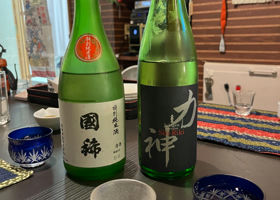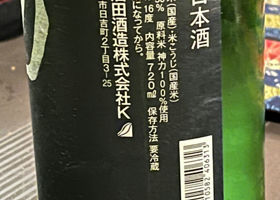

しんしんSY
The first time to match the Kunimare with Kamikimoto's shinriki.
Naturally, it was our first time!
We learned about the sake rice from the sake taster!
It was not so fruity, but I enjoyed the pleasant acidity!
There are still many sake that I don't know about!
We will take care of our health and try new sake!
Thank you, sake tasters, for your continued support 🤲.
extensive knowledge
Shinriki Rice" was discovered about 100 years ago by "Shigejiro Maruo" from Nakajima, Mitsu-machi, Ibo County, Hyogo Prefecture, starting from only three grains of seed rice.
Like Kame-no-o, it was eaten as edible rice, and was also widely used as sake rice (rice suitable for sake brewing).
However, there have been calls for the revival of Jinriki rice, and in recent years, efforts have been made to revive its cultivation as a rice suitable for sake brewing.
It has a sweet aroma that is different from that of fruit. It has a sweet aroma that is not fruity.
The high acidity tends to make one imagine that it is a strong sake, but it is a lighter sake than one might expect.
Rice: Shinriki
Polishing ratio 50%.
Yeast: In-house yeast
Sake degree +4
Acidity 1.6
Alcohol 16.0
Japanese>English